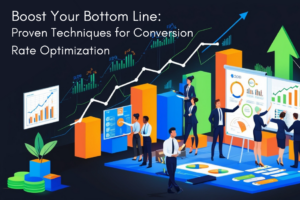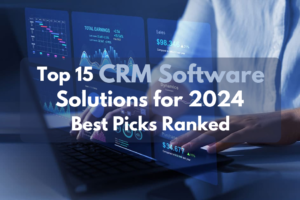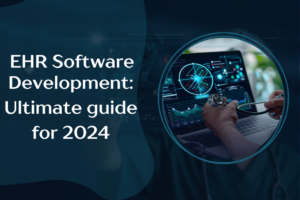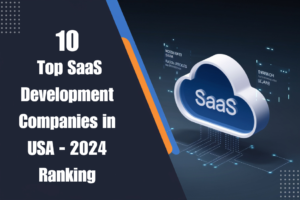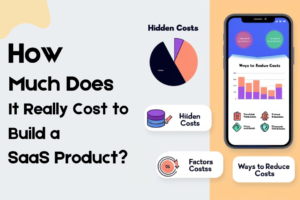The Performance of Data Analytics that Bring Impact on Business
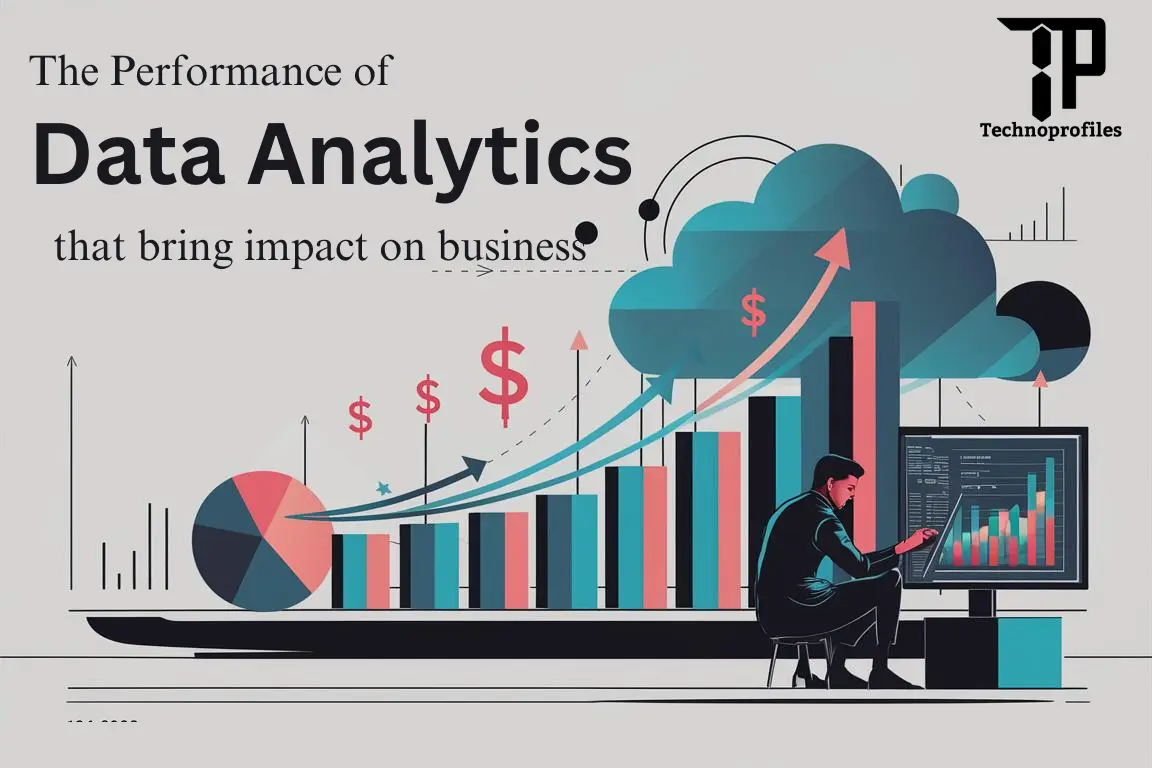
Table of ContentsToggle Table of ContentToggle
What is Data Analytics
Understanding the Need for Data Analytics
Data is being heralded as the new currency in today’s technologically driven world, and companies in a variety of industries are finding success with its strategic use. The ability to get insights from data is now a revolution. It’s in the middle of the daily flood of information. This ability fuels informed decision-making, enhances operational efficiency, and drives competitive advantage.
Different Data Analytics Types
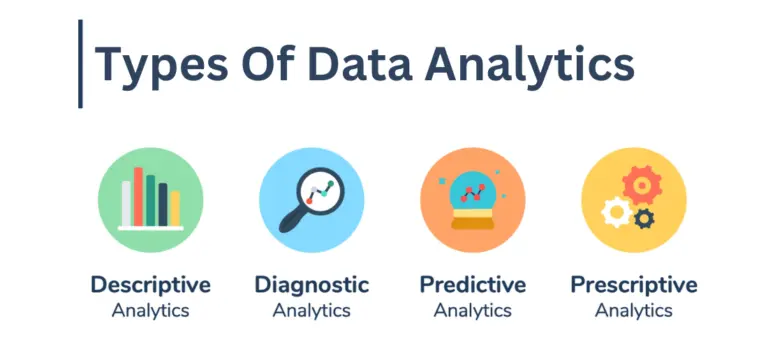
Businesses render services using different techniques that extract useful information from data. This is a review of numerous types of data analytics and how data analytics businesses apply them:
Descriptive Analytics:
These data analytics services summarize past data. It provides descriptive analytics: insights into past trends and performance. It provides information to the company on events that have occurred in its markets or activities. A retail company could benefit from the data and dashboards provided by an analytics firm. It makes use of them to observe trends in sales over time and identify seasonal tendencies in those sales.
Diagnostic Analytics:
Diagnostic analytics entail the use of past data to understand the causality of an event. Data analytics firms go through these diagnostic methods in order to understand the ‘why’ behind an anomaly or trend. For instance, a healthcare analytical firm might draw on patient data. It determines trends that cause readmissions in order to inform their guidance to hospitals on how to improve the quality of services provided to patients.
Predictive Analytics:
Predictive analytics uses statistical models and machine learning algorithms that make projections regarding future outcomes based on historical data. Data analytics services help a business see trends. It covers customer behaviour and market changes. A data analytics company may develop predictive models for an e-commerce company to understand demand and determine the amount of inventory to carry accordingly.
Prescriptive Analytics:
Prescriptive analytics goes a step further to recommend actions that will optimize the future outcome, based on the predictive insight. In these cases, data analytics companies use simulation with optimization. It uses these tools to recommend the best action for meeting goals. For example, an energy business may use prescriptive analytics. It uses it to estimate when to generate electricity from various sources. It bases this on demand patterns and weather predictions.
Cognitive Analytics:
Cognitive analytics incorporates new technologies such as natural language processing and machine learning to analyze unstructured data sources like text and images. Data analytics services in this realm make it possible for businesses to find insights. The insights come from large amounts of unstructured data. For example, a media analytics firm would run cognitive analytics on social media sentiment to understand the pulse of the world on a brand or product.:
The Compelling Value of Data Analytics Features: What Makes Them Attractive
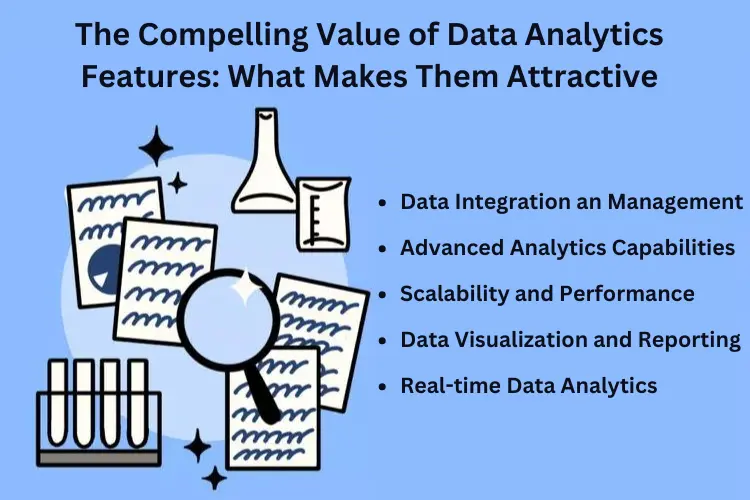
Advanced data Analytics Systems provided by data analytics companies or firms provide an all-inclusive package geared toward using the data to the maximum for business insights and decision-making. These systems are key to turning raw data into useful intelligence. These systems are key to turning raw data into useful intelligence an advantage over competitors in its markets allows a company to accomplish its strategic objectives. Following is a description of the characteristics broken down to fit the needs of data analytics services and companies.
Data Integration and Management:
Data analytics can integrate data from numerous sources, such as databases, cloud storage, APIs, and devices from the Internet of Things. This would let you integrate easily. It removes obstacles to managing and accessing data for a thorough examination.
Advanced Analytics Capabilities:
Statistical analysis, machine learning algorithms, and predictive modelling are examples of advanced analytical approaches. As a result, clients of data analytics companies can get data-driven suggestions. It also gets predictive insights.
Scalability and Performance:
Scalability is pivotal for data analytics companies handling large datasets. These systems are designed to scale horizontally or vertically to accommodate increasing data volumes and user demands without compromising performance.
Data Visualization and Reporting:
Inbuilt effective visualization tools and customized reporting features are given. It enables data analytics companies to show complex data insights. It does this through simple charts, graphs, and dashboards. These tools make the data easy to understand and act on.
Real-time Data Analytics:
Real-Time Data Idea Analytics The industries wanting information instant are chasing this. Such a system processes streaming data to support quick decisions and action on any change in the market or about the business.
Security and Compliance:
We secure critical client information with tight security. It uses data encryption and only allows access to authorized personnel. It is fully compliant with all relevant legislation for data protection, including CCPA and GDPR. It confirms the integrity and confidentiality of data so that it stays intact through end-to-end data analytics systems.
Collaboration and Sharing:
This means features that encourage collaboration across different teams or organizations and stakeholders are very important. These systems promote sharing data insights. It also enables collaborative data analysis and teaming in the organization or with clients.
Customization and Flexibility:
The data analytics service usually needs customization. This is to meet specific client and industry needs. Such flexibility in architecture and customized workflows thus support the ability of firms to customize analytics solutions effectively.
Integration with Other Systems:
The value addition in the analytics service can be made possible through seamless integration with the existing business systems such as CRM or ERP through APIs. It also provides access to all data and enables holistic analysis in decision making.
Continuous Improvement and Innovation:
Leading data analytics firms are those that focus on continuous improvement and innovation because market conditions are fast-changing. A leading firm will use new technologies, better analytics models, and new data sources. This will keep them competitive and let them keep providing top solutions for clients.
Future scope of the data analytics
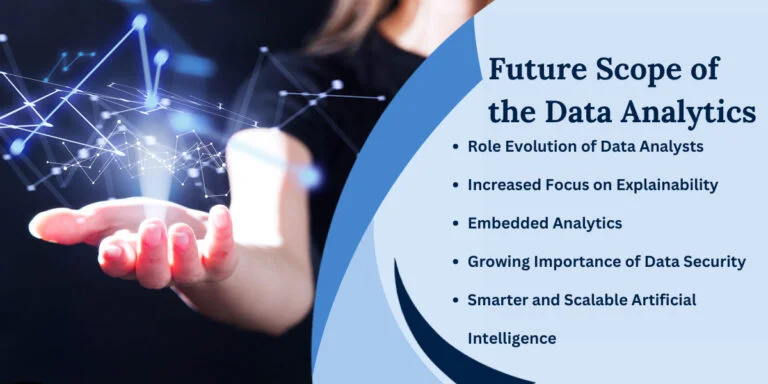
With technological advancement, increased data availability, and growing recognition from different sectors, as noted. It has the potential to improve decision-making, efficiency, and innovativeness. A bright and expansive future lies ahead for data analytics.
Role Evolution of Data Analysts:
Data analysts will shift from descriptive to predictive analytics, becoming strategic partners. who help organizations derive valuable insights from data to make informed decisions.
Increased Focus on Explainability:
AI models will want to be more open and understandable to humans for trust and ethical use in the decision-making process.
Embedded Analytics:
Data analytics will be integrated directly into workflows and applications, enabling real-time decision-making and fostering a data-driven culture.
Growing Importance of Data Security:
Data Analytics has gone native in workflows and applications. It provides real-time decisions and develops a data-driven culture.
Democratization of Data:
Data analytics dealing with a wide array of challenges related to data security, such as data tampering concerns and unauthorized access.
Smarter and Scalable Artificial Intelligence:
One makes the data more accessible to people of different technical levels in the organization. This can now be done with self-service analytics tools, visualization dashboards, and natural language interfaces. AI will become both smarter, adaptive, and useful. For example, it will improve explainable AI and transfer learning.
How Does Data Analytics Work, And What Are The Key Technologies It Uses In business?
It is, therefore, a rather complex and multi-dimensional process that calls for the use of several technologies at each stage of the life cycle. Technologies cover data collection, storage, analysis, visualization, deployment, and governance. Organizations must internalize them and use them in ways that let them get actionable insights through data. This will help them make informed decisions and drive long-term business growth and innovation.
Data Collection:
The most important part of analytics’ early stages is data collecting. Which permits the provision of data in its unprocessed form from several sources by data analytics companies, firms, or systems? Proper data extraction is key for data analytics companies and service providers. It means getting access to datasets that are meaningful. These are key for inferring useful insights and business decisions. It’s a process of structured, semi-structured, and unstructured data acquisition from a number of channels. These include databases, APIs, IoT devices, and social media platforms, among others.
Data Storage and Management:
Data management and storage provide the base for the development of data analytics activities. Enterprises that use data analytics help store, combine, and manage data in ways that produce insightful insights with increased decision-making autonomy with the help of current technology and best practices. Some of the fundamental modules of a robust, contemporary data infrastructure include: It offers fulfilment for so many requirements of today about data analytics systems.
Data Cleaning and Preparation:
Ensuring reliability and effectiveness by way of data cleaning and preparation are key activities relative to any kind of data analytics initiative. With the right set of tools, techniques, and best practices in place. Data analytics companies will be better placed to help their customers. It will helps them improve the quality of their analyses in a meaningful way. This will help them get useful insights for informed decision-making and strategic planning. These processes set the stage for getting the most from valuable data. It also improve business outcomes with data-driven insights.
Data Analysis Techniques:
The importance of techniques for data analysis cannot be overemphasized. It is through this that companies could reap heavy dividends either by developing in-house capabilities or through partnerships with data analytics firms. Organizations seeking growth, innovation, and efficiency use important tools. These tools include descriptive, diagnostic, predictive, and prescriptive analytics. It also use other technologies such as machine learning and text analytics. Such techniques would, therefore, prove quite important to be mastered by any data analytics business looking to remain competitive in the fast-changing market landscape as more and more data continue proliferating.
Data Visualization:
Effective data visualization is more a strategic asset than a tool in a data analyst’s kit. Which helps to accomplish translating difficult data into an intuitive insight, making an informed decision, and communicating more efficiently in an organization? Given the enterprises’ recognition of data as the new lifeblood driving growth and innovation. The need to master visualization techniques by a data analytics company becomes paramount. It delivers impactful solutions and stay competitive in the data ecosystem.
Deployment and Operationalization:
Deployment and operationalization represent key parts of an analytics improvement pipeline translating actionable insights from data analytics. Analytical models must be integrated into business operations well. Then, organizations can use data to decide, improve efficiency, and gain a competitive edge. A data analytics firm needs to master deployment and operationalization. These are necessary to provide robust and scalable solutions. The solutions must meet clients’ emerging needs in the fluctuating data environment.
Data Governance and Security:
Data governance and security ensure data reliability, integrity, and confidentiality in the life cycle of data. Data governance entails processes, policies, and standards. It defines how data is managed, used, and accessed in an organization. Governance is to set accountability, transparency, and compliance. These apply to all proper authorities from data collection to its use. On the other hand, data security should focus on securing data from unauthorized access, breaches, and threats in cyberspace. This is part of the effort to keep data highly confidential.
How Data Analytics Works:
Data analytics performance that bring impact on companies
Data analytics performance has long been a cornerstone. It drives immense value for companies of all sizes. Only this change empowers an organization to get insights from quantum data. It enables smart decisions, efficiency, and foresight.
Key Contributions of Data Analytics Performance:
Informed Decision-Making: Advanced analytics methodologies and technologies drive organizations from gut-feel to data-driven decision-making. The shift creates the capability for managers and executives to make speedy, well-informed decisions enabled by in-depth and real-time data analysis.
Operational Optimization: The data analytics sector finds inefficiencies in corporate processes. It optimizes company operations from customer service to supply chain management. Data-driven improvements increase service delivery while reducing costs in very many domains.
Personalized Customer Experiences: Through data analytics, businesses track the behaviours of people in a bid to learn consumer behaviour. It offers development that suits the unique interests of each client. Such customization creates conditions for greater engagement, contentment, and loyalty of consumers.
Predictive Capabilities: Businesses can leverage predictive analytics models to get a view of future trends, market demand, and associated risks. With this in sight, the carrier can anticipate. It can make proactive changes to strategies and operations to stay ahead of the competition and market changes.
Effective Risk Management: The second category is that of risk mitigation; it comprises financial, operational, and cyber-security risks. An organization can manage risk by using historical patterns and real-time analysis. It can do this proactively
Conclusion
Enterprises can see how data analytics work well. They enable better decisions, streamline operations, provide custom client experiences, and predict, and cover risks. Advanced analytics shows what it takes to succeed today. It uses modern procedures and technologies. These boost confidence and improve foresight.
It helps to make timely, well-calculated decisions based on data. It also helps a business to improve its processes to boost productivity and cut costs. By delivering personalized customer experiences, a company will have its customers in a stronger bond with itself. The experiences are driven by insights supported by data. It drives loyalty and satisfaction.
Predictive analytics enables the organization to project future trends and market dynamics and thereafter proactively adjust its strategy and operations. This forward-looking approach minimizes risks. It offers a business the chance to use upcoming opportunities before its competitors.
About Author

Written By Aadil Hussain
Aadil Hussain, a senior web developer and technical content writer, has been developing custom projects for TechnoProfiles for 4+ years. His expertise lies in WordPress, Laravel, MERN, MEAN and custom web/app development.

